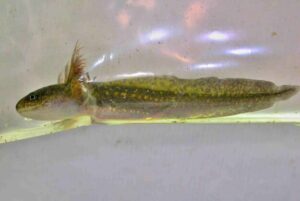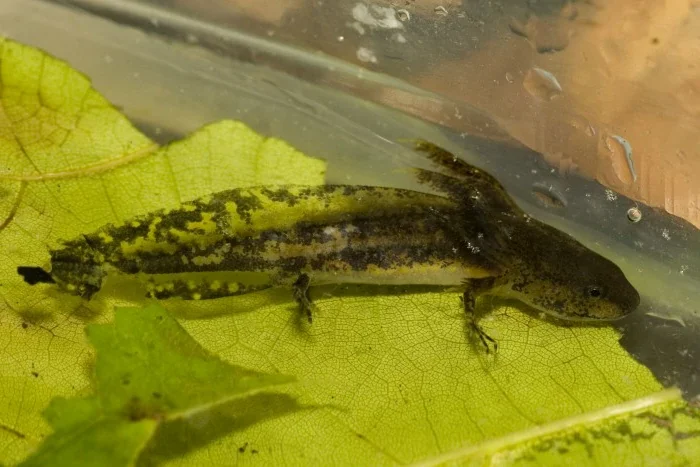Many people who keep salamanders as pets, or see them in the wild, often wonder how often baby salamanders need to eat. Feeding is very important for their growth and health. But it can be tricky to know how much and how often to feed them.
Baby salamanders usually need to eat very often, sometimes every day or every other day, because they grow fast and use a lot of energy.
Why Do Baby Salamanders Need Frequent Food?
Baby salamanders grow quickly. Their bodies are building organs, muscles, and limbs very fast.

This means:
- Their metabolism is very high.
- They need lots of nutrients and energy to fuel growth.
- Their small stomachs cannot hold large meals at once.
- Eating often gives them a steady supply of food for growth.
Because of these reasons, baby salamanders eat more often than adults. Missing meals or feeding too little can make them weak or sick.
How Often Should You Feed Baby Salamanders?
How often you feed depends on the species, age, and size of the salamander.
As a general guide:
- Newly hatched larvae should be fed every day.
- As larvae grow into juveniles, feed every other day.
- Young adults often eat every 2 to 3 days.
Salamanders can take from 6 weeks to 5 years to finish larval development, depending on the species.
Feeding too little can cause starvation, and feeding too much may pollute water or cause obesity in captivity.
What Should Baby Salamanders Eat?
Baby salamanders are carnivores. They need protein-rich food and mostly eat small live animals that move, which triggers their hunting instincts.
Common foods include:
- Tiny aquatic insects such as daphnia and mosquito larvae.
- Small worms like bloodworms or blackworms.
- Microscopic crustaceans such as cyclops or shrimp larvae.
- Small pieces of earthworms or other soft-bodied creatures for larger juveniles.
Salamander larvae are carnivores from larva to adult. Giving live food is important because movement encourages hunting and eating. Frozen or dead food is often ignored.
How Much Food Should Baby Salamanders Receive?
The amount of food depends on the salamander’s size and appetite.
It is best to:
- Offer an amount that can be eaten within 15 to 20 minutes.
- Remove leftover food to keep water clean.
- Adjust portions based on how much is eaten. If food is always left, reduce the amount.
- If food disappears quickly and the salamander seems hungry, increase feeding a little.
Feeding Behavior of Baby Salamanders
Even when small, baby salamanders are active hunters. They use their eyes and chemical senses to find food. Often they hide near plants, rocks, or debris and wait for food to pass by.

Aquatic salamanders catch prey using suction. They open their wide mouths quickly and suck in both prey and water. Baby salamanders may be shy or slow to eat in new surroundings. It can take time for them to learn their feeding routine.
How Does Feeding Change as Baby Salamanders Grow?
As salamanders grow:
- Their appetite increases.
- They can eat bigger prey.
- Feeding happens less often because bigger animals don’t need to eat as much.
Adults usually eat every 2 to 3 days. Larval salamanders have external gills (these are tiny feathery organs that let them breathe underwater) and teeth in both jaws.
Some species keep these larval traits into adulthood. Watching these changes helps you adjust feeding for healthy growth.
Common Challenges Feeding Baby Salamanders
New caretakers may face problems like:
- Baby salamanders refusing food.
- Food items being too big or too small.
- Food rotting in water and making it dirty.
- Stress causing loss of appetite.
The number of larvae and their surroundings can affect growth and survival. Patience and attention help. Trying different live foods, keeping tanks clean, and feeding at the right time all help baby salamanders eat well.
Best Practices to Feed Baby Salamanders in Captivity
To feed baby salamanders safely:
- Offer live food using tweezers or a small pipette to bring food close.
- Feed during dawn or dusk when salamanders are most active.
- Keep water clean by removing uneaten food daily.
- Give a varied diet for balanced nutrition.
- Avoid overcrowding so every salamander gets food.
Salamanders have many ways of growing, including keeping larval features, skipping larval stages, or growing directly into adults.
Feeding Baby Salamanders in the Wild
In the wild, baby salamanders eat whatever small aquatic animals are around, like tiny insects and worms. Their feeding depends on what is available and staying safe from predators.

Wild salamanders eat irregularly, based on chance encounters with prey, unlike regular feeding in captivity. They use flexible hunting skills to catch food in different environments.
Feeding Frequency and Food Types for Baby Salamanders
| Stage | Feeding Frequency | Common Food Items |
|---|---|---|
| Newly hatched | Every day | Daphnia, mosquito larvae |
| Young larvae | Every 1-2 days | Bloodworms, cyclops |
| Juveniles | Every 2-3 days | Larger insects, small worms |
| Adults | Every 2-3 days | Earthworms, insects, small crustaceans |
Why Proper Feeding Is Important
Feeding baby salamanders the right way:
- Supports healthy growth of limbs and organs.
- Gives energy for moving and escaping predators.
- Reduces disease from poor nutrition.
- Encourages natural hunting behavior.
Poor feeding can make salamanders weak, sick, and shorten their life. Temperature while they develop in eggs can also affect body size and survival as larvae.
How to Know If Baby Salamanders Are Eating Enough
Signs they are eating well:
- Active and alert during feeding.
- Steady growth and weight gain.
- Clear eyes and smooth skin.
- Regular movement and activity.
If salamanders refuse food, lose weight, or become sluggish, their diet or environment may need changing. Young salamanders become less at risk from predators as they grow.
Conclusion
Baby salamanders need to eat often, usually every day or every other day, because they grow fast and use a lot of energy. Offering small live food in the right amounts helps them grow healthy and act naturally.
Feeding changes as they grow, but regular and balanced feeding is always important. Watching how they eat helps you keep them healthy, and baby salamanders are great examples for learning about growth and life cycles.
Hi, my name is Ezra Mushala, i have been interested animals all my life. I am the main author and editor here at snakeinformer.com.

